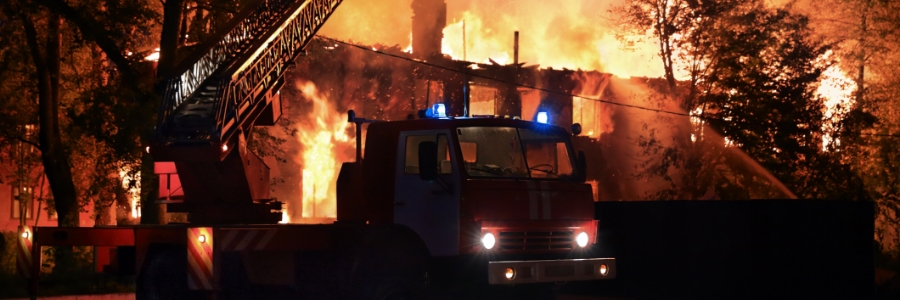Lessons learned from recent incidents such as the West Fertilizer Company (WFC) explosion and the Tianjin China port explosion reveal the need for more comprehensive pre-incident planning. While the 2015 NFPA 1620 Standard on Pre-incident Planning was updated after the WFC incident, it comes up short on details for how communities gather relevant data on hazards, conduct a risk analysis and inform the local community of the hazards pre-incident, as well as engage in crisis communications. The Chemical Safety Board investigation of the incident identified seven factors that contributed to the incident including a lack of pre-incident planning. So, how can communities learn from tragedies such as these? Here are six ways to improve pre-incident planning.

What can communities learn from the West Fertilizer Company explosion?
- NFPA Standard 1620 is a good starting point. It identifies the minimum that a community should do to adequately plan for incidents at fixed facilities. It builds on a solid foundation that is fire centric, but calls for a collaborative approach among facility managers, operators, emergency planners and responders.
- Engage the Local Emergency Planning Committee (LEPC). The LEPC is the central focal point for hazmat planning and has the authority to work with facilities, rail industry, and hazmat transporters to gather the data need to do effective pre-incident planning. The LEPC is also a multi-disciplined entity that brings perspectives and representative from all community stakeholders: fire, law enforcement, EMS, schools, hospitals, citizens, elected officials and hazmat transporters.
- Adopt an all-hazards approach to planning. While EPA regulations focus on media-specific hazards and OSHA regulations focus on types of hazards, its possible to overlook some risks (as was the case in West, TX) in the planning process by just complying with regulations. FEMA’s Comprehensive Planning Guidance 201 attempts to bridge the gaps but there is still a lack of credible guidance on how to gather data in an all-hazards approach so that an effective risk analysis can be completed. A comprehensive all-hazard approach should address transported hazmat over rails, roads, waterways, air, and pipelines; Hazmat facilities (including those exempt from filing Tier II reports because they store chemicals below the threshold, government status, or chemical is not on the list); nuclear power plants; radioactive material licensees; laboratories (including schools which tend to have low quantity, high risk chemicals in laboratories); and fertilizer storage and resale facilities.
- Utilize a risk-based approach to planning. There are multiple risk-based methodologies. We have had success using a quantitative method that provides an objective result based on historical data and modeling. This method accounts for multiple causes for releases and explosions such as accidents, natural disaster and man-made causes. This quantitative method also enables risk-based prioritization with natural disaster threats and man-made incidents. Modeling the incident with plume modeling, explosive modeling and transportation modeling enable a comparative analysis of the risks as well as prioritization for funding preparedness initiatives, training, equipment purchases and exercises.
- Document the analysis and corresponding immediate response actions in the Pre-incident plan. The pre-incident plan should serve as tool for first responders to take immediate actions based on the pre-incident planning and analysis. During a crisis, leaders are under a significant amount of stress which can hamper effective thinking, analysis and decision making. An effective pre-incident plan should provide the incident commander and responders with immediate actions that assist in rapid scene size-up, responder actions and public protective actions. This will lead to rapid and effective decision making and hopefully save lives and prevent casualties.
- Share the plan. Since an incident of this magnitude will require a multi-agency response, its important to communicate respective roles and responsibilities to those that will engage in response. This should include: elected officials, EMS, Fire, Police, hospitals, emergency managers and facilities that could be impacted by the incident. This will enable each organization to incorporate the threat into their emergency action plans, training and exercises.
In the aftermath of the WFC explosion, the incident commander performed to the best of his ability with the information and resources that he had available. A comprehensive pre-incident plan could have prevented the loss of 12 initial responders and 260 casualties as it would have highlighted the priority hazards on-site, complexity of the incident requiring the ICS, availability and location of hydrants, immediate actions, the explosion overpressure zones, downwind hazard areas and vulnerable populations. A pre-incident plan could have also equipped the incident commander and community with a consistent approach to triage and casualty collection points, hospital transport, command post location, and hazard monitoring, further reducing the workload of a task-saturated incident commander. A pre-incident plan can serve as the basis for conducting training and exercises in hospitals, nursing homes, schools and among the public safety community. While the risk-based pre-incident planning process may be complex, the collaborative process engages all of the stakeholders in a whole community approach that is designed to protect responders and the public.
To learn more about risk-based pre-incident planning, attend the presentation at the VA hazmat conference on Sep 15th at 0830, or contact Alliance Solutions Group at 757.223.7233.
Don't worry, no spam here!
Keep up to date with the latest trends, best practices and innovations in the Emergency Management and Environmental, Health and Safety sectors.

